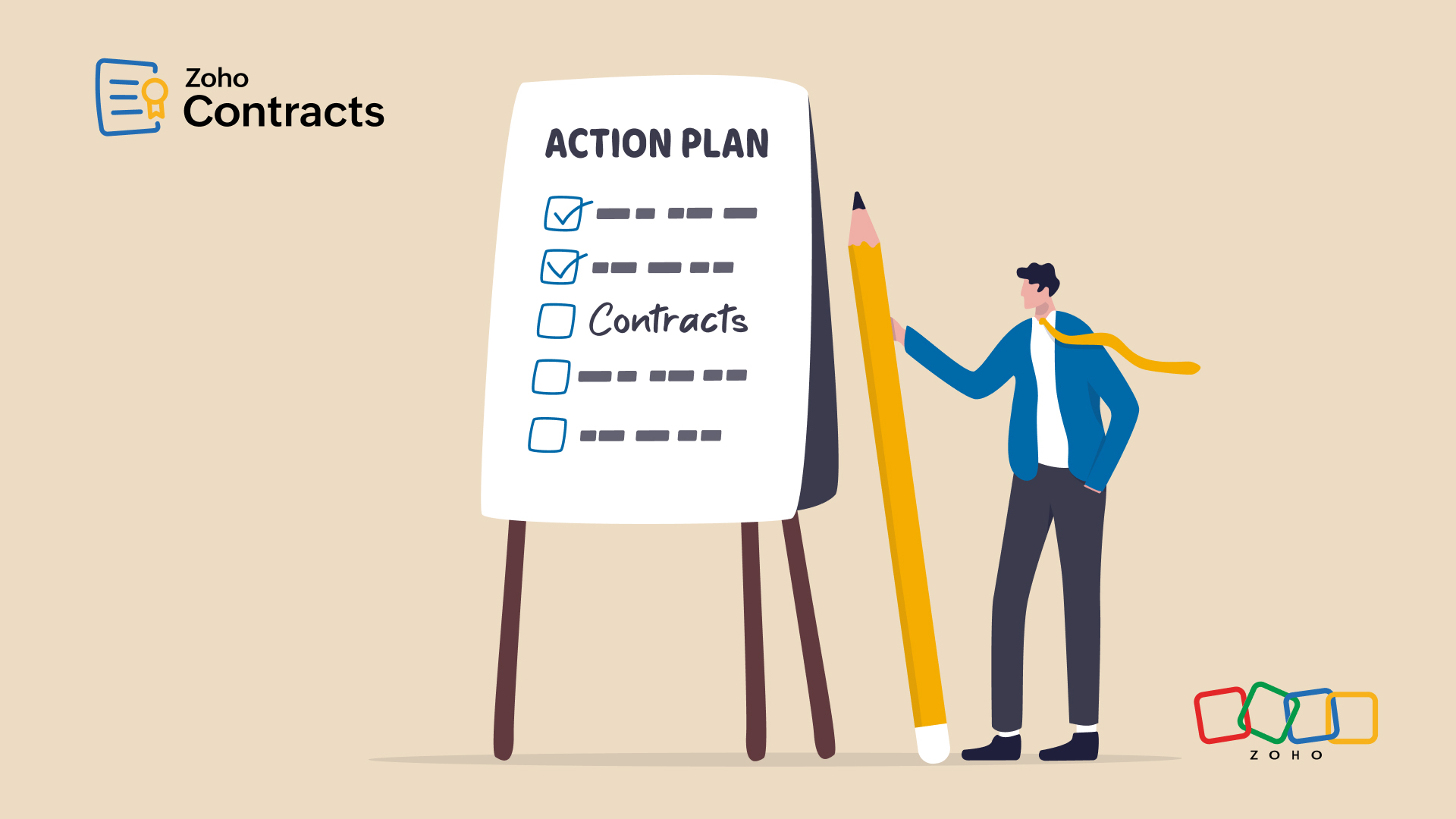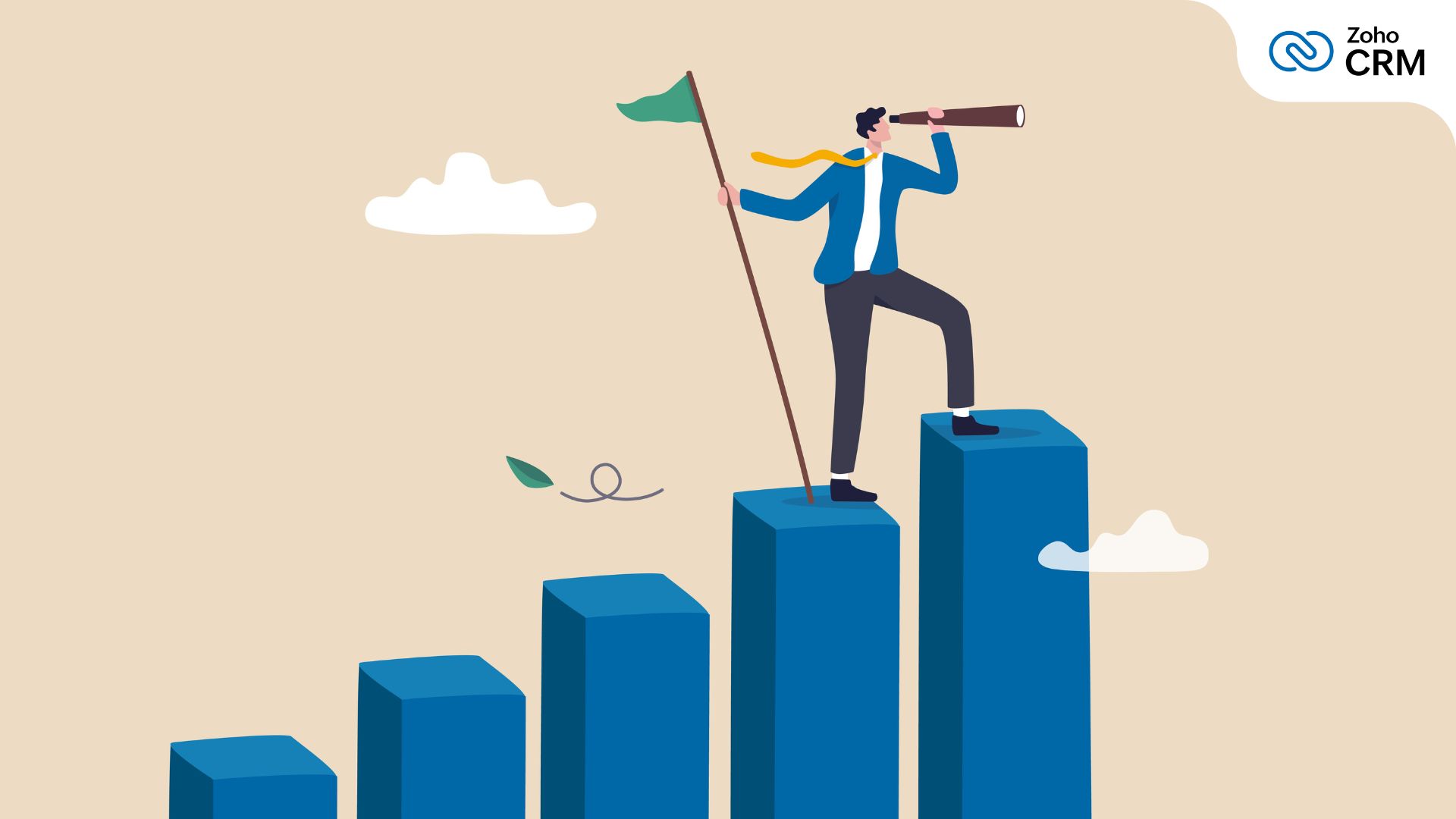Data-driven sales approach: Leveraging sales analytics for winning in a competitive landscape
- Last Updated : November 13, 2024
- 147 Views
- 8 Min Read

Let's face it: Running a business is a challenge when solutions and solution providers are plenty. Finding your niche and landing a sweet spot among others in your target domain can mean the difference between success and failure. The secret to winning in your domain and growing your business is simple: data.
Every business activity, whether it's sales, management, operations, support, supply chain and logistics, product development, or marketing, generates a lot of data. So, why not put that data to good use and move your business forward? After all, this data holds the secret to figuring out buying behaviors, planning marketing strategies, forecasting future outcomes, automating repetitive tasks, streamlining operations, improving customer retention, and identifying and imparting sales training to agents who need it the most.
That's where sales analytics comes in.
What is sales analytics?
Sales analytics is an umbrella term used to encompass all the processes, procedures, and tools used in transforming raw business data into actionable insights. It's the process of using business data and analytics to power sales decision-making and improve business outcomes.
Despite its obvious benefits, Forrester states that between 63% and 70% of all enterprise data is never used for analysis. It's time to change that. Let's start with the benefits.
Why use sales analytics?
Sales analytics is the secret formula to getting more deals and revenue out of your sales efforts without adding to your workload. It's achieved by tailoring and channeling your efforts towards promising, high-value deals. Here are some examples of leading organizations in the world winning with sales analytics:
- Amazon uses sales analytics to personalize product recommendations that account for 35% of its total web sales.
- Netflix uses big data analytics to decode customer preferences and suggest shows that have helped increase their customer retention rate by 93%.
- The Department of Defense leverages data as a strategic asset for tactical planning and warfare.
In the business front, sales analytics can be leveraged to gain countless benefits that can put the business on a fast-track to sustainable and measured growth. Here are a few real-life applications of how sales analytics can boost business growth.
Improve lead generation
Improving lead generation is entirely about identifying the source of high-quality leads that can boost your conversion rates, increase sales, and shorten the sales cycle and renewal cycle. Use a combination of customer segmentation, demographics, and past purchase history analysis to understand what customers prefer, such as the channels, the content, the strategies, and the product. Then, make incremental changes to improve engagement and measure the results over time. As the next step, replicate this success formula across other channels to get high-quality leads across all channels.
For example, if you notice an increase in sign-ups to receive product samples for a new cosmetic range at your online store, particularly among women between the ages of 30–35, then it's a clear signal of this group's preference. The next step is to plan targeted campaigns to convert this group of leads into customers. You can also dive deeper to find out which of the other customer cohorts can be targeted using the online store.
Improvise lead prioritization
Lead scores, based on how customers engage with your brand, mapped alongside demographic information, can quickly rearrange your lead pipeline and help sales navigate towards the right leads for follow-ups. The lead scoring exercise is not to limit the sales team's focus on leads but simply channel sales efforts towards leads that show the highest potential for conversion. It's an attempt to build high-performing sales teams. Otherwise, critical sales talent might end up spending time on cold leads, or leads that are unlikely to transition to a purchase.
The best sales analytics CRM can help identify common behaviors customers exhibit right before a purchase, and scan your lead base for similar behavior across email, chat, phone, NPS surveys, or social media, and award scores based on the weight of each action. In cases where doing this process manually might seem tedious, AI-led lead scoring can automatically score leads and help the sales team save time and manage their priorities better, resulting in better overall sales.
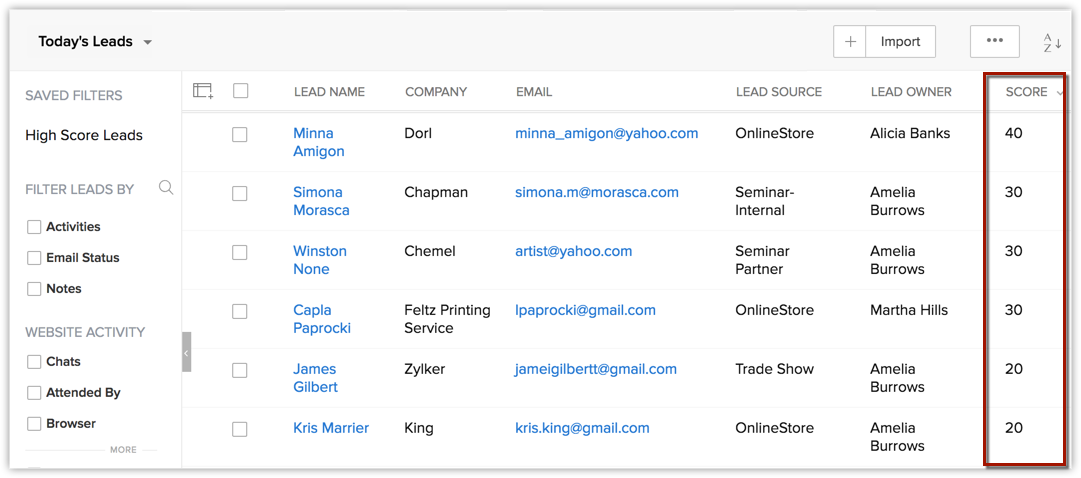
Maximize customer lifetime value
Businesses extensively focus on leads in order to convert them into customers. But, what about leads after they become customers? A recent survey reveals that 41% of revenue for ecommerce businesses comes from just 8% of existing customers. Clearly, engaging meaningfully with customers after initial sales brings a boat load of benefits for businesses.
Up-selling or cross-selling to existing customers is a low-hanging fruit that businesses can capitalize on to push revenue figures towards their targets. Given that customers' data, preferences, demographics, and purchase history are already in your CRM system, it becomes easier to engage with them and build thoughtful connections.
The key ingredients to maximizing revenue from existing customers is to understand two things: What customers need and when they need it. Understanding when customers are ready for cross-sell initiatives can translate to quick wins. For instance, a customer who buys a Polaroid camera is bound to come back for film refills within a few months. Getting a broad timeframe of when customers would need a refill can help plan your campaigns and strategies.
There's no silver bullet to knowing what customers need instantly. The key is to build long-standing relationships through relevant messages, personalized content, and outreach programs. Openly communicating with customers makes them feel seen, heard, and valued, and can go a long way in fostering a healthy relationship—one that can prove to be beneficial for both parties involved.
Share product updates; send out samples or free trials of new products; invite customers over for collaborations, PR events, and media studies; or just do frequent checks to see how they feel about your products or services. So, when you eventually reach out to customers for subscription renewals, it will be an organic move.
Improve forecasting accuracy
Imagine this: There's just one week left to wrap up the month, and the sales head asks their team, "Do we have any more deals that we can close? We're significantly far from our revenue goals." Any business that wants to avoid this situation needs to take sales analytics-fueled forecasting seriously.
While forecasting helps determine accurate revenue projections for specific periods, sales analytics helps identify new sales opportunities as well as identify gaps that can derail revenue projections during the time frame. It can also identify strong and weak points in sales pipelines, provide guidance on how to distribute agents and efforts on the right deals, identify the need for training within your sales team, and shed light on which strategies are no longer effective.
For instance, consider a SaaS startup with a solid revenue projection for the year. Sales analytics can augment this projection with reliable predictions on how much each sales team in each region can achieve. Then, break it down further to how much individual sales representatives can shoulder. Built using leading indicators that cover objective milestones, predictive forecasting can keep forecasts objectively grounded and realistic.
Here is an illustration that highlights predicted achievements for sales reps based on their past and current performance and the status of the sales pipeline.
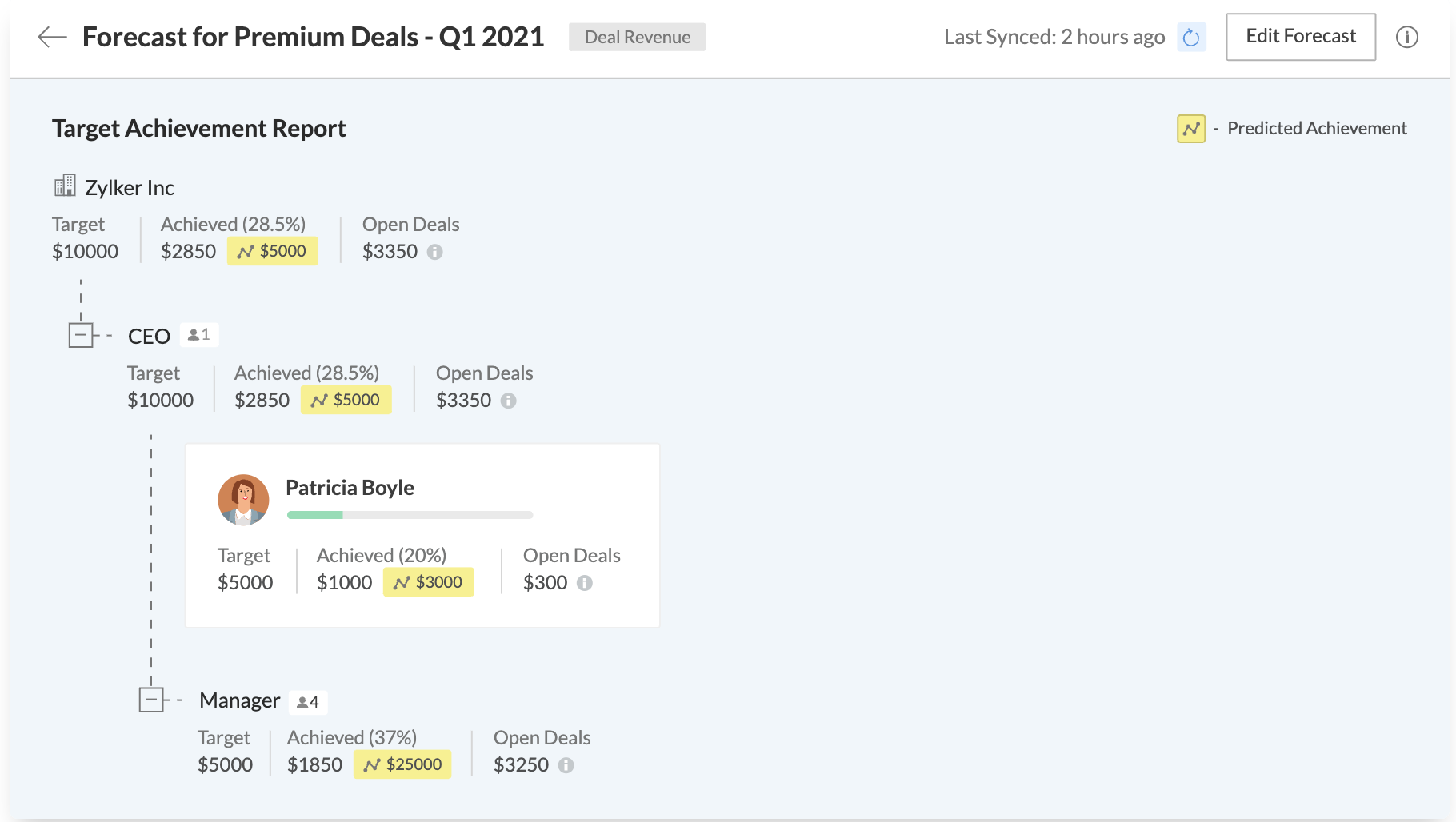
Understand customers and build authentic relationships
To win, it's not enough just to personalize communications; it needs to be hyper personalized. Every call, text message, email, and social post needs to be specifically targeted to your customers' wants and needs. Particularly for enterprises that offer an array of products and services, it's important to group customers into segments and sub-segments to deliver truly personalized experiences. Sales analytics can then be leveraged to get a comprehensive view of customers through demographic, transactional, and buying behavior that enables businesses to build multiple cohorts and buckets, and strategize to win in each segment and sub-segment. This knowledge can help you build conversations that are truly meaningful to customers and match customers with the right product at the right time.
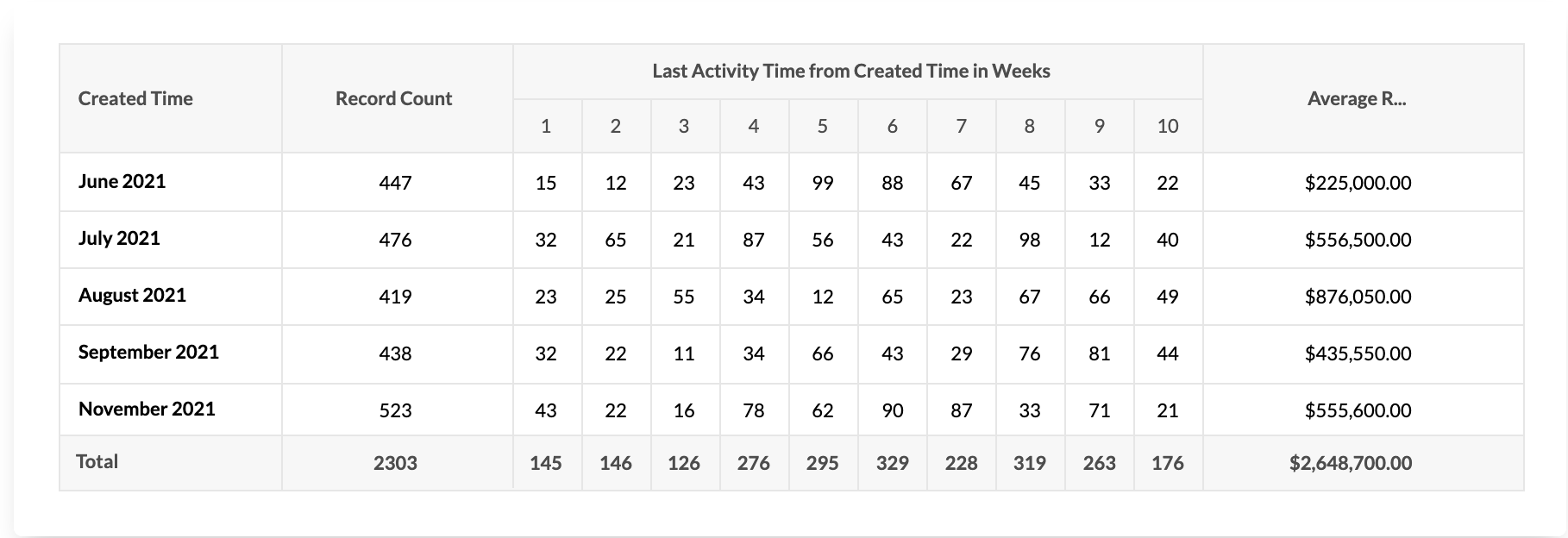
With sales analytics, you can analyze customer data to predict behavioral attributes leading up to a sale. For instance, you can predict the most preferred time to contact customers, close deals, for repeat purchases, and even cancellations. This helps plan sales and marketing budgets, resource allocation, product launches, point of sale success, and more.
Sales analytics can be extended to understand marketing strategies that brought leads into your sales bucket, which can be leveraged to grow the business with greater predictability. Tailoring approaches with the right messaging, at the right time, and through the right channels can push more quality leads into the sales funnel, boost engagement, deliver truly connected experiences for customers, and land a pool of intent-driven leads in the sales pipeline.
Key components of a data-driven sales strategy
Gartner claims that 84% of sales leaders struggle to adopt a data-driven sales strategy owing to poor data, data privacy issues, and limited cross-functional collaboration between internal teams. Data-driven sales strategies can deliver transformative benefits only when they are adopted conscientiously with the right tools and components, including the following.
- Quality data: Bad data is the primary deterrent to a data-driven sales approach. Weaving data into everyday sales processes, enforcing clean data policies, and leveraging AI to clean and update missing customer information can ensure faster adoption of data into sales decision-making.
- CRM systems and data tools: A prerequisite to quality data in your systems is to have a comprehensive and customizable CRM solution that is built around your business needs. It should come with endless customization, integration, and platform capabilities to ensure data is collected, maintained, and used across the entire sales process. Zoho CRM customers report a 300% increase in sales conversion rates post adoption.
- AI and machine learning: Data, by itself, does not offer much value until it's sliced, diced, and analyzed to extract valuable insights from it. AI and machine learning built into your CRM can put the insight-gathering process in turbo drive by consuming vast quantities of data in seconds and delivering actionable insights. Additionally, AI-powered sales CRM can speed up the decision-making process, perform several tasks, and take on a bulk of the sales work using data to decode patterns.
- Managerial buy-in: Having the best tools doesn't directly deliver insights unless the tools are used to their fullest potential. Managerial buy-in is a critical factor in training, coaching, and getting the sales team to adopt data more proactively.
- Sales analytics: Implementing sales analytics gets much easier when you have a solid sales analytics application at your disposal. Look for applications that can blend sales data from multiple modules and glean insights that can directly be used to take instant action, so you can witness the impact of sales analytics.
Zoho CRM takes a platform approach that incorporates a full-fledged sales analytics solution to enable you to track key metrics and KPIs using widgets, charts, target meters, funnels and cohorts. Check out the Zoho CRM platform here.
